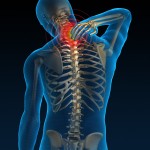Merck & Co.’s decision to discontinue the pain relief drug Vioxx has left millions of people scrambling for an alternative for pain management. According to the American Pain Foundation, there are more than 50 million Americans suffering from chronic pain, or 25 million experiencing acute pain as a result of injury or surgery. Worldwide, 2 million people were taking Vioxx at the time of the recall.
If you’re a pain sufferer, here’s some good news: Plenty of options exist to ease aches, and many of them don’t come in pill form. After all, Vioxx only entered the market in 1999, and arthritis, menstrual cramps, post-surgery pain, and other aches and pains soothed by the drug have been around and managed for a much longer time period.
Only a few common alternatives are discussed in this article. There are dozens, if not hundreds, more pain relief approaches out there. Many of them may be snake oil in various shapes and sizes, and we know that has been around for ages.
Before trying any pain relief approaches, it is important to talk with your doctor. Some therapies may not be safe or appropriate for you, even if they are of the nonpharmaceutical kind. Different factors need to be considered before undergoing any treatment, including your medical condition and history.
Also keep in mind that none of the resources available are perfect pain remedies. They may not provide complete pain relief. They do not work the same for everyone. You may have to try a number of different strategies and combine some of them before finding an acceptable level of pain relief. As with any treatment, there may also be risks and side effects.
A benefit of trying out alternative therapies is that you may find a pain relief option that works for you. We all know how priceless pain relief can be. So don’t give up on finding respite for your suffering.
Take an active part in your rehabilitation, advises Penney Cowan, executive director and founder of the American Chronic Pain Association. She says people need to ask themselves, “What’s my role in regaining control of my life and actually living with this pain?”
“A big part of pain management is feeling like you have to regain control of your life, because the pain has taken over,” says Cowan.
Pain Relief With Physical Therapy
There is no one solution to pain, but at least one expert says physical therapy is highly effective. “I recommend it to almost all of my patients,” says Hayes Wilson, MD, chief rheumatologist at Piedmont Hospital in Atlanta, and national medical adviser to the Arthritis Foundation.
Physical therapists teach people how to take care of themselves. “If you give a man a fish, he eats for a day. If you teach him how to fish, he eats for the rest of his life,” says Wilson, noting physical therapists are like fishing instructors.
He is not far off. According to the American Physical Therapy Association, physical therapists teach patients self-management skills. In the case of arthritis, therapists show people how to deal with pain in day-to-day life. They show people how to build up strength and improve range of motion, and how to make sensible decisions about activities to prevent arthritic flare-ups.
Yet physical therapy is far from a panacea. In patients with severe rheumatoid arthritis, a condition that can shave 10 to 15 years off life, Wilson sees immune-modulating drugs as a first choice of treatment, and physical therapy as an adjunct.
In patients with osteoarthritis, the condition could worsen if swelling isn’t fully addressed. “I think physical therapy does decrease inflammation to a certain extent, but I think the most dramatic changes to inflammation are made pharmacologically (with medicine),” says Wilson.
In looking for a physical therapist, it is important to first find out whether your health care plan covers visits. Next, look for a trained professional, someone who is licensed to practice in your state. It is also helpful to find a therapist who has experience in dealing with your particular condition.
Pain Relief With Acupuncture
Easing pain with needles may sound agonizing, but acupuncture is an ancient form of pain relief.
Acupuncture originated in China thousands of years ago. In traditional practice, needles are pierced through the skin in specific areas to improve the flow of energy throughout the body. Western scientists suspect the practice may stimulate the release of chemicals, which can either soothe pain, or prompt the body’s natural healing systems.
The National Institutes of Health has sponsored a number of studies on acupuncture, including its affect on arthritis, inflammation, and chronic pain. Until researchers can better pinpoint how acupuncture works in pain relief, physicians such as Wilson say the patient’s faith in the procedure has a lot to do with its success.
“I think it can work for anybody, but it’s going to work for the people who believe in it,” Wilson says, adding that many treatment strategies are effective in part because of the patients’ belief in them. “People who don’t believe they’re going to get better, I think, are less likely to get through.”
Acupuncture is not recommended for people who are taking blood thinners, or for those with a bleeding disorder. Risks of the procedure involve dangers inherent in needle use, including spread of an infectious disease, piercing of organs, minor bleeding, and broken or forgotten needles.




